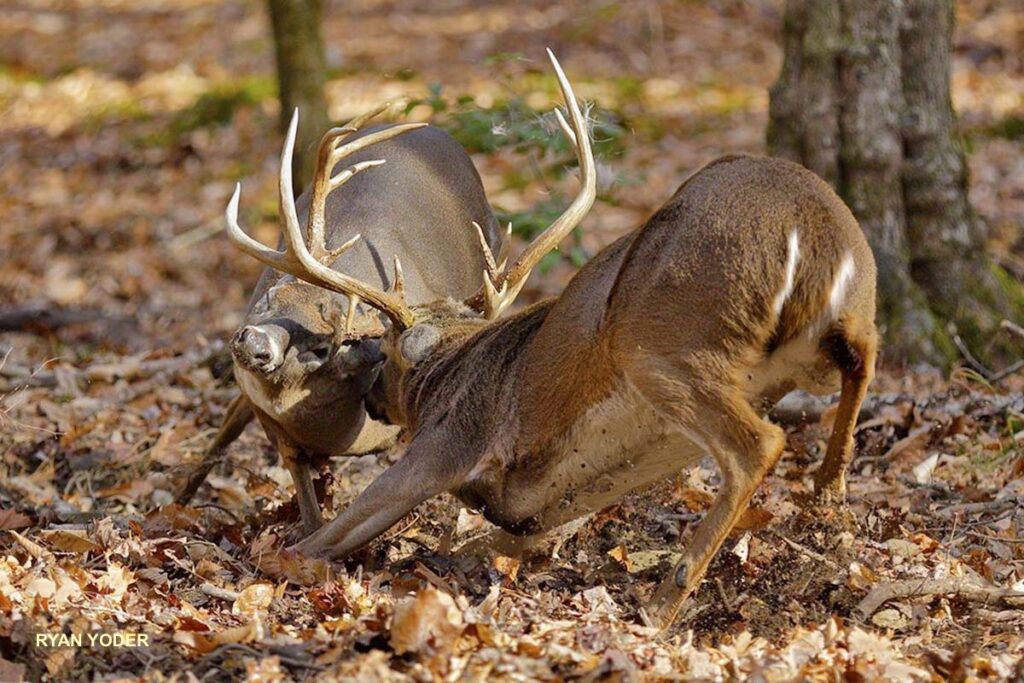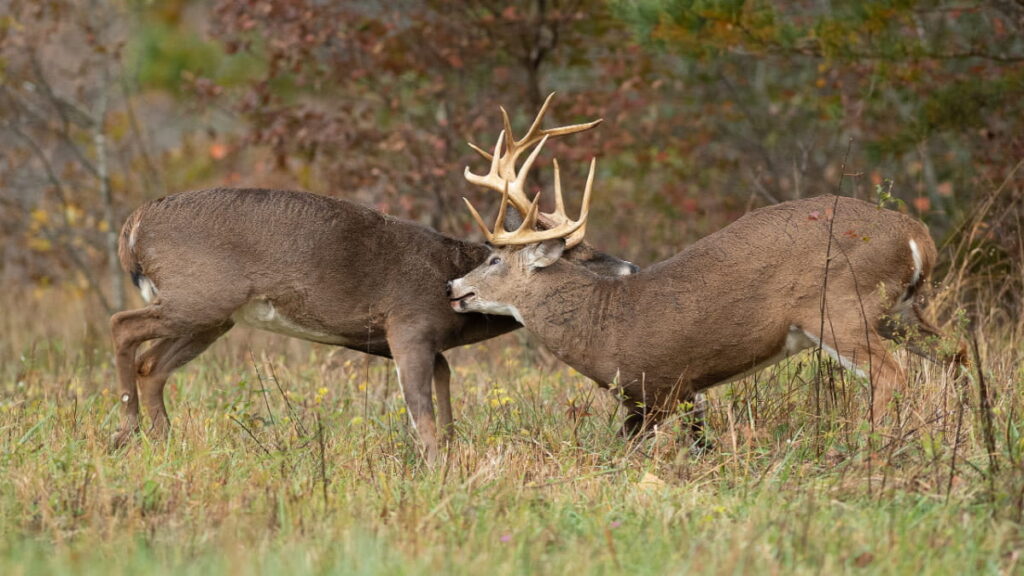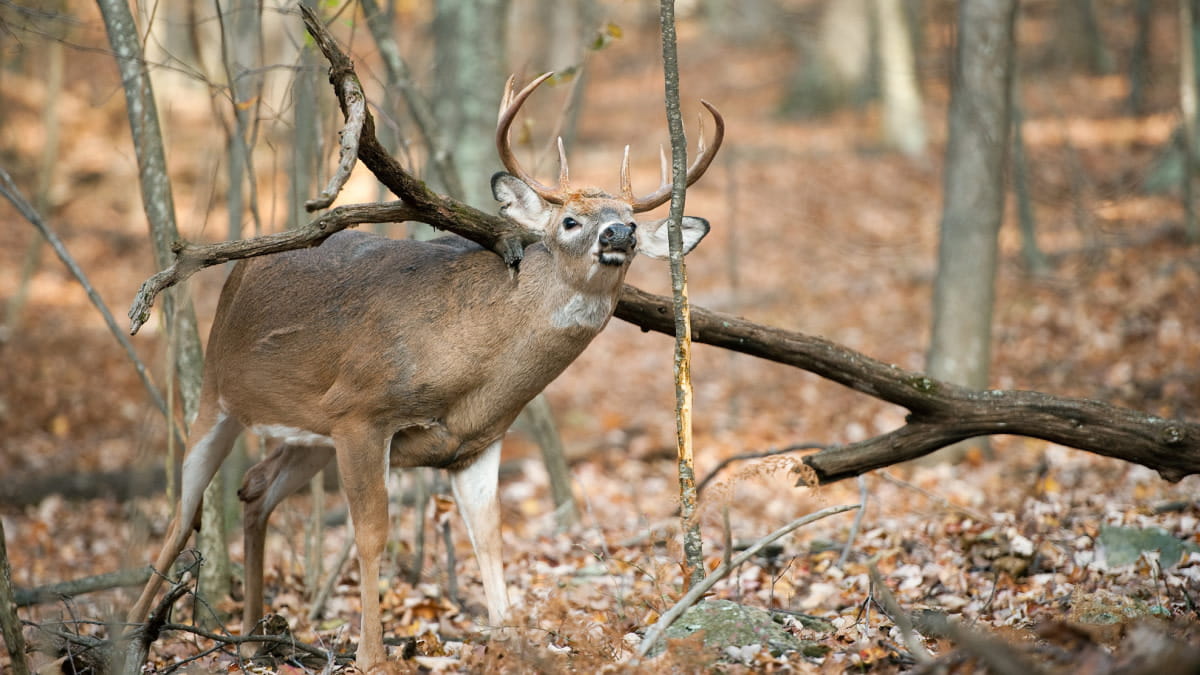The rolling hills and lush forests of East Tennessee offer a picturesque backdrop for the captivating annual event known as the deer rutting season. This natural phenomenon, characterized by remarkable changes in deer behavior, plays a crucial role in the balance of the ecosystem. Understanding deer rutting in this region provides us with valuable insights into the intricacies of wildlife behavior and the significance of conserving their habitats.
In this article, we will delve into the captivating world of deer rut in East Tennessee, exploring the behavioral changes, communication methods, environmental factors, and hunting considerations surrounding this enchanting period.
Let’s stay with us until the end!
Table of Contents
The Deer Rutting Season in East Tennessee
Deer rutting season, also known as the breeding season, occurs annually during a specific period in East Tennessee. Typically, the rutting season takes place in the fall, usually in the first two weeks of November, especially from November 7 to November 13. The timing of the rut is influenced by various factors, including changes in daylight hours and weather conditions. As the days grow shorter, the deer’s biological clock triggers the onset of rutting behavior.
The rut is a crucial time for deer population control. During this season, the natural drive for reproduction leads to increased deer activity and movement. Bucks, in particular, become more visible as they seek mates and establish dominance within their social hierarchy. Understanding the timing of the rut helps us comprehend the intricacies of deer behavior and population dynamics.
Behavioral Changes During the Rut
The deer rut is marked by profound behavioral changes in both bucks and does. As the dominant players in the breeding process, bucks undergo notable transformations during this period. They become more aggressive, engage in territorial behavior, and often display dominance through physical confrontations with other bucks. The sounds of clashing antlers resonate through the woods as these magnificent creatures vie for mating rights.
Does, on the other hand, exhibit altered behavior during the rut as well. They release powerful scents to signal their receptiveness to potential mates. Additionally, does may alter their movement patterns, often leading bucks on prolonged chases to evaluate their fitness as breeding partners.
Throughout the rut, communication plays a vital role in the deer’s mating rituals. Bucks use deep grunts and roars to establish dominance and attract potential mates. Does emit softer vocalizations and engage in intricate scent-marking rituals to communicate their readiness to breed. Understanding these behaviors sheds light on the intricacies of deer communication and the role it plays in successful mating.

Understanding Deer Communication and Mating Rituals
Deer communication during the rut involves both vocal and olfactory cues. Bucks produce a series of vocalizations, each serving a distinct purpose. The common grunt, a deep and guttural sound, is used to assert dominance and announce their presence to does and rival bucks. Roars, more aggressive vocalizations, serve to intimidate competitors and express confidence.
Scent plays a critical role in deer communication during the rut. Bucks use scent glands located on their forehead, known as preorbital glands, to leave scent marks on trees and branches. These markings serve as a means of communication, conveying information about their presence and status. Similarly, the tarsal glands located on the lower legs of both bucks release pungent scents that convey various messages, including readiness to mate.
The courtship and mating rituals during the rut are a sight to behold. Bucks will relentlessly pursue does, engaging in ritualistic chases and displays of dominance. The does, on the other hand, may lead bucks on a dance of attraction, carefully evaluating their suitor’s fitness before choosing a mate. These intricate courtship rituals are a testament to the beauty of nature’s design.
Environmental Factors Affecting Deer Rut in East Tennessee
Some of the environmental factors that influence deer rutting behavior in East Tennessee are listed below:
- Weather
- Habitat and food availability
- Human activities and disruptions
A detailed description of each factor will be found below. Let’s go with us!
Weather conditions play a significant role, as temperature fluctuations and precipitation can impact the timing and intensity of the rut. Studies suggest that cooler temperatures may accelerate the rut, while prolonged warm periods might delay it. Similarly, rain can temporarily suppress deer activity, affecting their movement and behavior.
Habitat and food availability also play a crucial role during the rut. Deer are more likely to engage in rutting behavior in areas with dense vegetation and plentiful food sources. Lush forests and open fields provide ideal settings for deer to carry out their mating rituals. Furthermore, the abundance of mast crops, such as acorns and berries, can influence the overall health and reproductive success of deer populations during the rut.
Sadly, human activities and disruptions also affect deer behavior during the rutting season. Habitat destruction, road traffic, and human presence can cause stress and disturbance to deer populations. Conservation efforts, such as maintaining wildlife corridors and minimizing human impact in crucial areas, are essential to ensure the well-being of deer and their ecosystems during this critical time.
Read this post: How Long Are Deer Pregnant? The Facts You Need to Know
Hunting and Conservation Considerations
As the rutting season coincides with hunting season in many regions, it is vital to address the ethical aspects of hunting during this period. For many hunters, the rut presents an opportunity to pursue mature bucks exhibiting unique behavior. However, ethical hunters must also consider the impact of their actions on deer populations and their natural behaviors. Responsible hunting practices, such as selective harvesting and adherence to hunting regulations, are essential for the long-term sustainability of deer populations in East Tennessee.
Conservation efforts are crucial in protecting the delicate balance of nature during the rut. Establishing and maintaining protected areas and wildlife preserves are essential steps in safeguarding deer habitats and their breeding grounds. Additionally, public education on the significance of the rut and the importance of preserving natural ecosystems can foster a sense of responsibility and stewardship among communities.
Observing Deer Rut in East Tennessee
For wildlife enthusiasts, observing deer rutting behavior in the wild is a rewarding experience. To ensure a positive encounter for both humans and deer, it is essential to follow certain guidelines. Respecting wildlife distances, using binoculars or telephoto lenses, and avoiding sudden movements are crucial to minimizing stress on deer during this sensitive time. Many state and national parks in East Tennessee offer opportunities for wildlife observation, providing visitors with a chance to witness the captivating world of deer rutting in their natural habitat.

Conclusion
The deer rutting season in East Tennessee is a mesmerizing natural phenomenon that showcases the beauty and complexity of wildlife behavior. Understanding the timing, behavioral changes, communication methods, and environmental factors during this period allows us to appreciate the significance of the rut in maintaining a healthy ecosystem. Responsible hunting practices and conservation efforts are pivotal in ensuring the continued existence of deer populations in the region. As we witness the captivating rituals of deer in the wild, let us embrace our role as stewards of nature, cherishing and protecting these magnificent creatures and their habitats for generations to come.

